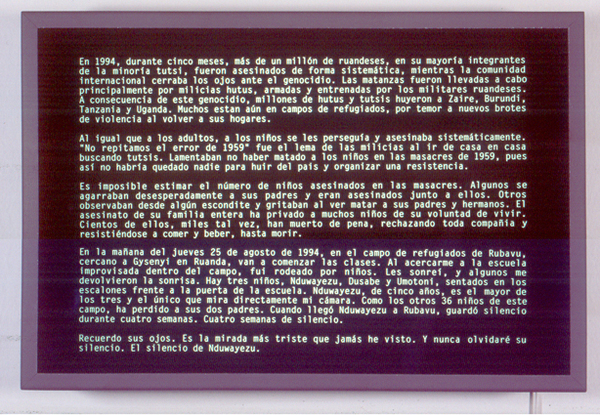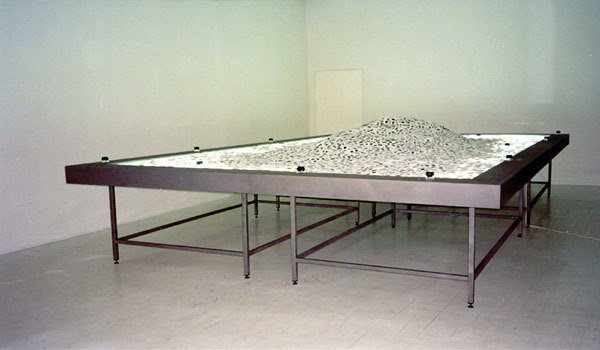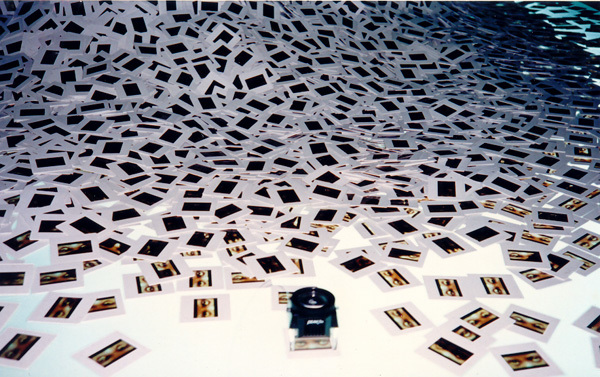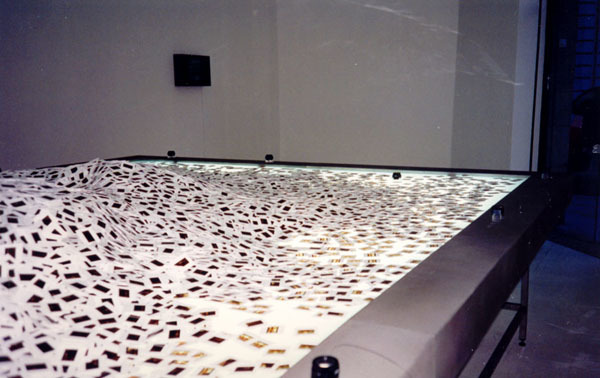
El silencio de Nduwayezu, 1992. Light box. 30 x 45 x 10 cm. |

El silencio de Nduwayezu, 1997. Light table, one million slides, twenty loupes. 90 x 300 x 500 cm. Unique edition. |

El silencio de Nduwayezu, 1997. Light table, one million slides, twenty loupes. 90 x 300 x 500 cm. Unique edition. |

El silencio de Nduwayezu, 1997. Light table, one million slides, twenty loupes. 90 x 300 x 500 cm. Unique edition. |
Over a five-month period in 1994, more than one million Rwandans, mostly members of the Tutsi minority, were systematically slaughtered while the international community closed its eyes to genocide. The killings were largely carried out by Hutu militias who had been armed and trained by the Rwandan military. As a consequence of this genocide, millions of Hutus and Tutsis fled to Zaire, Burundi, Tanzania and Uganda. Many still remain in refugee camps fearing renewed violence upon their return home.
Like adults, children were systematically targeted and killed. “Do not repeat the mistake of 1959” became the catch-phrase among the militias as they went from house to house seeking out Tutsis. The militias were sorry they had not killed the children during the 1959 massacres so there would have been nobody left to leave the country and form a resistance.
It is impossible to estimate the number of children killed during the massacres. Some children clung desperately to their parents and were slaughtered together with them. Others watched from hiding places and screamed as they saw their parents and brothers and sisters being murdered. For some children, the murder of their entire family has robbed them of their will to live. Hundred, perhaps thousands, have died of sorrow, withdrawing from everyone and refusing to eat or drink until they finally died.
On Thursday morning on August 25, 1994, at Rubavu Refugee Camp near Gysenyi in Rwanda, school is about to begin. As I approached the make-shift building inside the camp, children gathered around me. I smiled at them and some beamed back. Three children, Nduwayezu, Dusabe and Umotoni are seated on the steps in front of the school door. Nduwayezu, 5, is the oldest of the three and the only one that looks directly at my camera. Like the other 36 children in this camp, he has lost both parents. When Nduwayezu arrived at Rubavu, he remained silent for four weeks. Four weeks of silence.
I remember his eyes. They were the saddest eyes I had ever seen. And I will never forget his silence. The silence of Nduwayezu.

